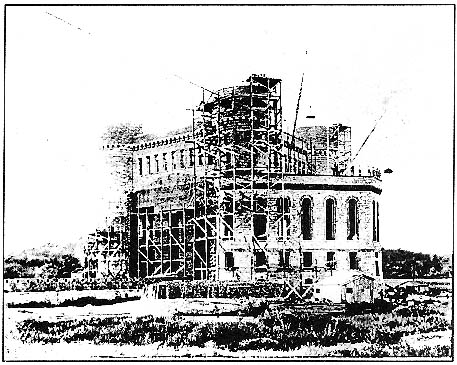 |
 |
|
On October 1, 1900, the institution's first 16 prisoners arrived, 15 by transfer from Sing Sing and one from Auburn. Curious crowds gathered at the Ellenville railroad station to watch as the men, shackled and in stripes, detrained and climbed onto wagons for the short trip to Napanoch. Unlike the state's other reformatories, Eastern was placed under the jurisdiction of the superintendent of state prisons. This temporary administrative arrangement allowed the Prison Department to send older, stronger prisoners to complete the building of the new reformatory. To relieve overcrowding at Elmira, the latter's board of managers was also authorized to make transfers to Napanoch. During its first year, the Eastern New York Reformatory received an additional 259 prisoners by transfer, 113 from the prisons and 146 from Elmira. In that first year, 32 convicts were released (31 by commutation and one by parole), six were transferred back to the prisons, and three escaped. The census at the close of the fiscal year (September 30, 1901) was 234; it would not approach the projected capacity of 500 for 25 years.
Of the 275 prisoners received the first year, 252 were white and 23 "colored" (as they would be called into the 1960's). As might be expected from the combination of reformatory and prison origin, the inmate population was a mix in terms of age, crime, and sentence. One inmate was 15 years old and six were 16; four were in their fifties and another four 60 and older; most were in the 17 to 29 group. 79 were convicted of crimes against the person, including two murders; 194 for property offenses (arson, larceny, forgery, and receiving stolen goods); one for escape; and one for "illegal voting." Five were serving one year terms; two, life; with the largest number (117) serving five years (the standard reformatory sentence in 1900). 154 inmates were native NYers, 49 were from other states, and 72 were foreign-born. 85 admitted to prior incarcerations, though the number was probably much higher: fingerprinting and reliable record sharing by states and localities were years away. 47 admitted "intemperate" drinking habits, while 101 or well over a third (surprising in pre-Prohibition days) claimed to be abstainers. . . .
|
To |
To Correction |
To |